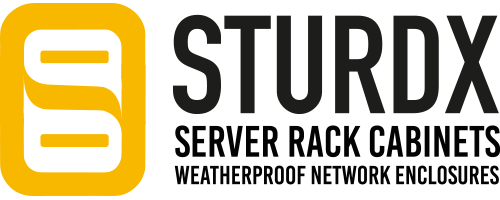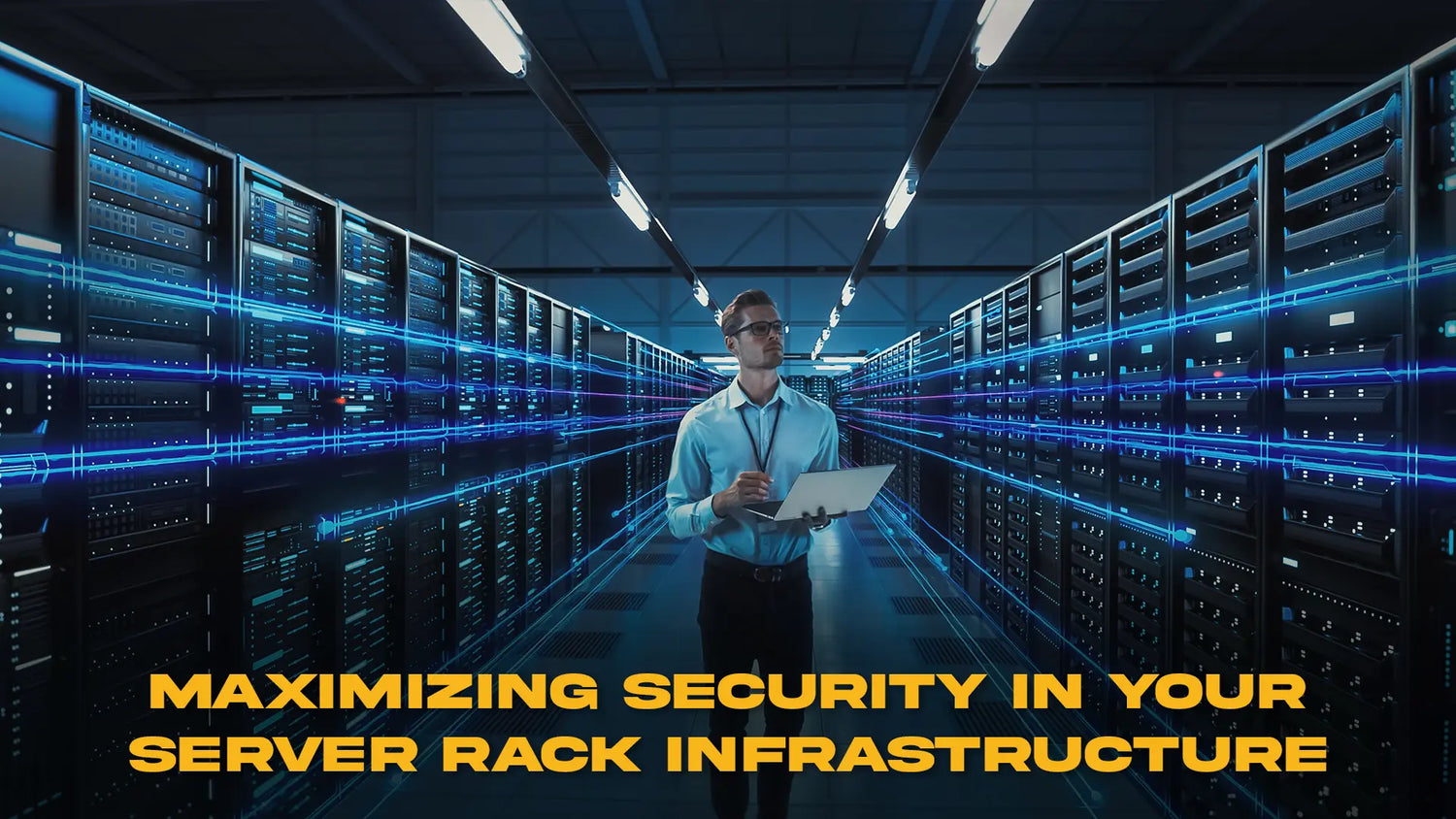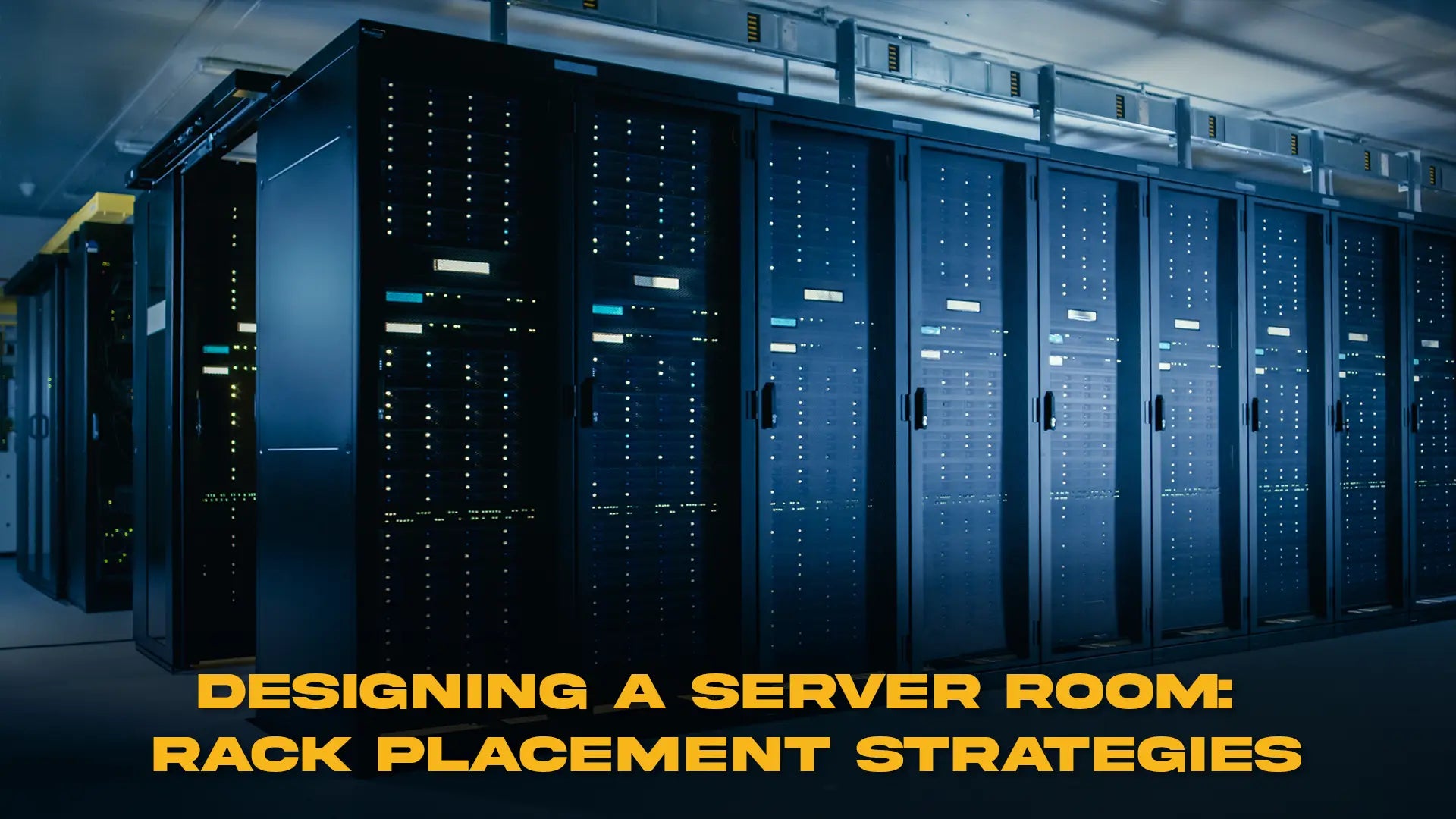In the modern networked digital age, your IT infrastructure requires added protection than ever. Whether you're operating a small business or managing an enterprise level data center, you must safeguard your hardware from unauthorized access, theft, or even unintentional damage. That's where server rack security is at the center of a sound IT plan. Secure server racks shield against data loss, downtime, and expensive hardware losses.
Security in a server rack environment means locking doors just as part of it. Physical deterrent, access control, environment monitoring, and strategic location plan are elements calling for proper consideration. From lockable drawers to smart notification systems, there shouldn't be gaps in your data center security policy. For paying for comprehensive security, other than safeguarding information being sensitive in nature, customers get to feel it more as well as become better at following industry expectations.

This post explores the most effective ways to maximize your server rack setup for ultimate security. We'll examine cabinet solutions, environmental monitoring, and management tools that will help you elevate your infrastructure to the next level of security. Whether you're setting up a new network or securing your current configuration, these tips will help you build a more resilient, stable, and secure environment.
Choosing the Best Server Rack Cabinets for Security
The foundation stone for any secure server setup starts with the choice of correct server rack cabinets. They not only hold your network and computing hardware but also offer the initial line of physical defense against unauthorized access. Not all racks are created equal—some of them have high grade locking mechanisms and tougher steel frames for warding off tampering or invasion.
When comparing cabinets, seek out models that provide multiple access control methods. Some include biometric locks, RFID badge systems, or standard keyed locks to suit various security requirements. These capabilities allow for easier tracking of who uses the equipment and when, providing an added layer of responsibility to your IT infrastructure.
Another critical factor to consider is scalability. As your network grows, your security measures must keep pace. Modular cabinet systems that allow for easy upgrades, expansions, and reconfiguration can save time and money while keeping your security tight. Always consider future proofing your setup by investing in versatile, secure cabinets right from the start.
Invest in Lockable Cabinets to Deter Unauthorized Access
One of the most effective yet simplest physical security implementations is through the use of lockable cabinets. The enclosures include built in locks to deny access to any individual who would seek to make unauthorized modifications to sensitive networking equipment and servers. When working from a co-working office or a secure data center, physical barriers matter.
Lockable cabinets prove especially useful in environments where multiple departments share a common server room. They allow each business unit or team to lock up their equipment separately without affecting the others. Segmentation reduces the potential for unplugging by accident, misconfiguration, or theft that can lead to costly outages.

Most of the lockable cabinets available today offer smart locking technology, enabling you to remotely monitor and control access as well as receive alerts when doors are opened. The advanced systems offer real time monitoring as well as access logs so that you have full visibility and control of who accesses your infrastructure.
Go Beyond Locks with a Locking Storage Cabinet System
Although physical locks are required, a locking storage cabinet system offers yet another level of organized security for your server ecosystem. Such systems allow for safe, categorized storage of not only servers, but also cables, backup drives, networking devices, and paperwork. This arrangement ensures that the key components not only get protected, but are easily accessible when the need arises.
A locked storage cabinet eliminates human error. For example, having patch cables or valuable guides in an unlocked drawer invites mistakes and misuse. Storage prevents items from being misplaced and destroyed and enables a structured, uncluttered working environment. Tidy areas similarly reduce response time in the event of technical malfunctions or disasters.
Also, secure cabinets improve compliance and inventory control. When everything has a known, locked place, it is easier to monitor and audit equipment for regulatory or asset management reasons. It's a fast upgrade that adds a lot of long term value to operations and security.
Install Multi Layered Access Controls
Security experts typically recommend a layered method of protection—and it specifically addresses server rack security. A single lock can deter some attacks, but combining various methods of control provides a much better protection. Access controls should include the combination of physical, digital, and procedural elements.
Start by providing position based tiered access. Not every staff member needs access to every item of equipment. Assigning roles will prevent accidental interference and maintain the integrity of your configuration. Use smart access technologies like keycards or biometric readers to impose these restrictions.

Add physical barriers to surveillance systems like security cameras and motion detectors. Not only does this deter unwanted access, but it also leaves records of activity to be called up in the future. Putting all these measures together under one management system makes things more transparent and accountable throughout.
Secure Network Cables and Ports from Tampering
Protecting your network hardware is only half the battle—ports and cables can be manipulated or easily pulled out at random too. Exposed or loose cabling also increases the chances of signal loss, security breaches, and system crashes. The positive news is that cable management features are often included in lockable storage cabinets.
Cable locks, sleeves, and labeled conduits organize wiring and facilitate restraint. This makes faults easy to spot and reduces the risk of disconnection or miswiring when servicing. Locking mechanisms on network ports are even featured on higher end racks, granting yet another level of control.
Along with physical security, consider implementing software monitoring that will alert you to port activity or disconnection. These systems will alert your IT staff in real time should a connection be lost, enabling immediate response and cleanup. Together, these physical and virtual solutions keep your network infrastructure intact and protected.
Monitor Environmental Conditions Within the Rack
The majority of data center issues stem from environmental issues like overheating, humidity, or poor airflow. These have to be monitored and managed to maintain performance and security. The majority of server rack cabinets are sensor enabled nowadays, monitoring temperature, humidity, and airflow.
Mounting sensors within the rack helps you detect abnormalities before they become full fledged problems. The devices can be hooked up to alarm systems that alert your IT staff to potential threats via email or SMS, so they can act before damage occurs. Proper climate control extends the lifespan of your equipment.
Environmental monitoring isn't just about protection—compliance is also on the agenda. Industries like finance and healthcare have extremely tight regulations on data center environments. Smart monitoring systems provide the documentation for audit and compliance checks, so you can rest easy and avoid fines.
Track and Log All Physical Access to Your Racks
Knowing who accessed your servers and when is a fundamental part of security. Having a good logging system is not only helpful for accountability but also for forensic analysis in case of an incident. This can be achieved through badge access logs, biometric scan records, or manual sign in sheets, depending on your infrastructure.
Electronic locks on modern storage cabinets also incorporate inbuilt tracking capability. Such systems track every entry, including date, time, and identity, and may be part of a larger security initiative. This gives you an end to end audit trail that can be invaluable in being able to control your infrastructure.
In addition to keeping unwanted access at bay, granular access logs also support compliance processes. Most regulatory requirements in the industry require proof of restricted access and incident response capability. Logging systems digitally ensure that you are always audit ready.
Don't Forget Remote Access Monitoring and Alerts
Remote monitoring and access are paramount, particularly for distributed networks or multi location groups. Having the ability to monitor and manage your server rack environment remotely without physically being there serves to ensure server rack security at all times. Remote systems allow you to act more quickly when there is a problem and decrease downtime.
Integrate your physical security devices into remote access devices. These can be from cameras to digital locks, environmental sensors, and movement detectors—all funneled into a shared dashboard. Your employees will be able to monitor conditions, receive alerts, and even perform lockdowns if necessary through this hub.
Furthermore, remote solutions offer scalability. As your infrastructure grows in size, centralized management systems can grow to include new devices and locations. This allows for consistent policies and monitoring boardwide regardless of where your hardware happens to be situated.
Build a Culture of Security Awareness
Security guarantees cannot be provided by technology alone. Establishing a security awareness culture is just as important. Regular training, having effective policies in place, and internal audits can help make sure that your team understands and respects security protocols at all times. Additionally, it’s crucial to emphasize server rack security, ensuring physical access to servers is properly controlled to avoid unauthorized tampering.
Train your IT staff and other personnel to report suspicious or tampering related activity. Encourage responsibility by having well defined roles and responsibilities for the use and upkeep of equipment. An informed staff can be employed as an extension of your security system, especially when it comes to server rack security, where physical safeguards play a critical role.
Finally, incorporate security into your operations on a continuous basis. Do not employ it as an initial setup or annual audit requirement. Continuously check and update your safeguards since threats are continually being updated. With proactive action, your server environment can remain secure, efficient, and compliant in the future.




Dejar un comentario
Este sitio está protegido por hCaptcha y se aplican la Política de privacidad de hCaptcha y los Términos del servicio.